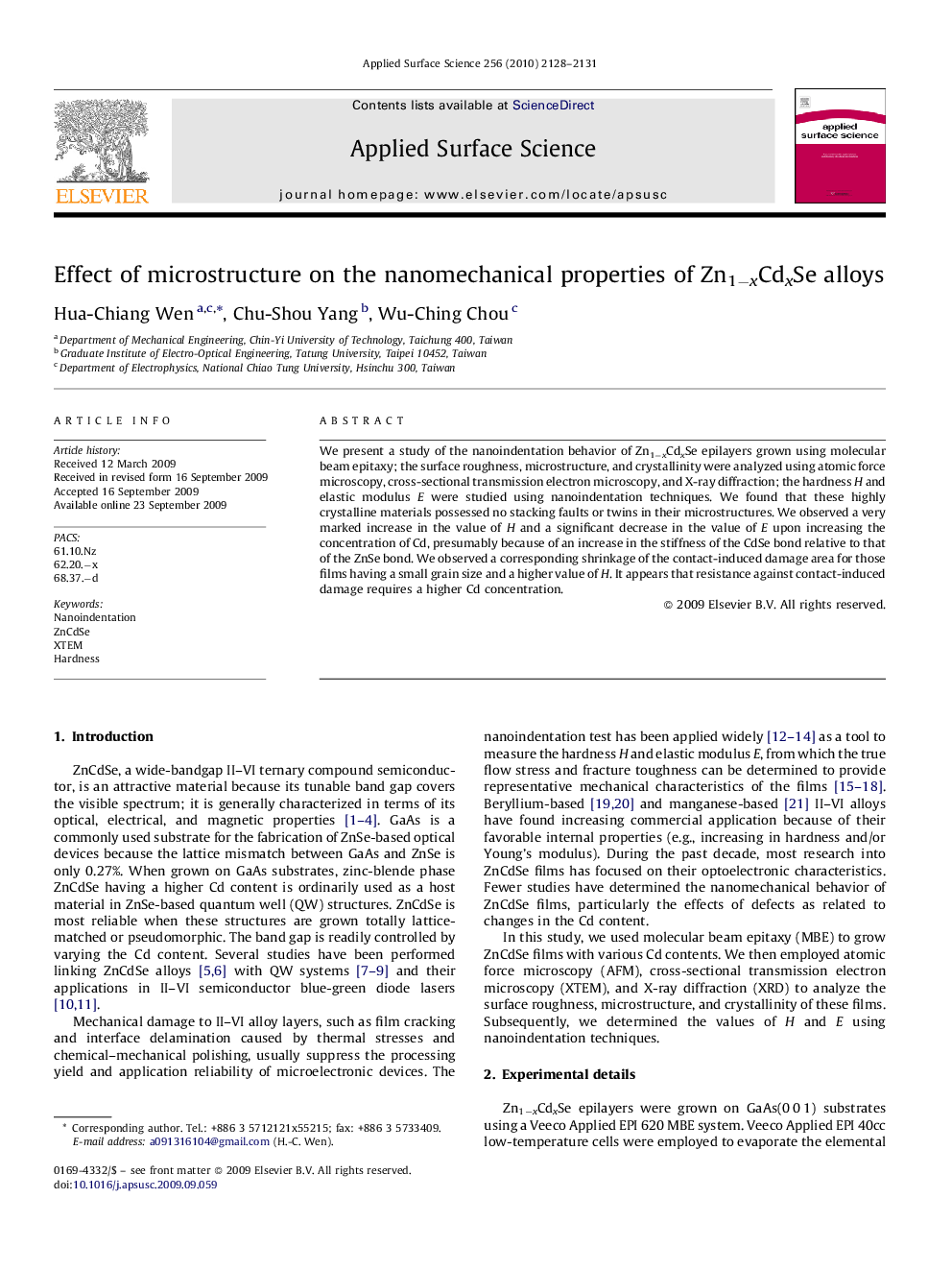| Article ID | Journal | Published Year | Pages | File Type |
|---|---|---|---|---|
| 5365958 | Applied Surface Science | 2010 | 4 Pages |
We present a study of the nanoindentation behavior of Zn1âxCdxSe epilayers grown using molecular beam epitaxy; the surface roughness, microstructure, and crystallinity were analyzed using atomic force microscopy, cross-sectional transmission electron microscopy, and X-ray diffraction; the hardness H and elastic modulus E were studied using nanoindentation techniques. We found that these highly crystalline materials possessed no stacking faults or twins in their microstructures. We observed a very marked increase in the value of H and a significant decrease in the value of E upon increasing the concentration of Cd, presumably because of an increase in the stiffness of the CdSe bond relative to that of the ZnSe bond. We observed a corresponding shrinkage of the contact-induced damage area for those films having a small grain size and a higher value of H. It appears that resistance against contact-induced damage requires a higher Cd concentration.
